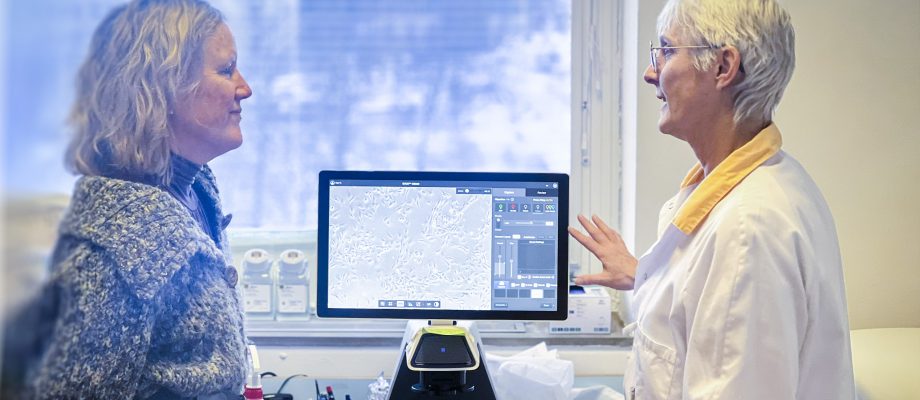GRANT. Professor of Clinical Bacteriology Christine Wennerås has received SEK 5.6 million in research funding from the Sjöberg Foundation. Her project is investigating the cancer B-cell lymphoma, its association with the bacterium Neoehrlichia mikurensis, and the possibility of curing certain cases with antibiotics.
Together with other researchers in Germany and Switzerland, Christine Wennerås discovered in 2010 that the bacterium Neoehrlichia mikurensis can cause disease in humans. Neoehrlichia mikurensis is a common bacterium among ticks in Sweden and much of Europe.

“It’s easy to miss the bacterium, as it cannot be detected by blood cultures or other common diagnostics,” says Professor Wennerås, who works at the Department of Infectious Diseases at the University of Gothenburg and is a consultant at Sahlgrenska University Hospital. “PCR on blood samples is currently the only diagnostic option. In Sweden, this analysis is only performed at Sahlgrenska University Hospital’s Department of Clinical Microbiology.”
Associations with lymphoma
The infectious disease caused by the bacterium is now called neoehrlichiosis. Those with weakened immune systems are usually affected the worst by the infection, resulting in fever, chills, body aches, inflamed blood vessels, and even blood clots or damaged blood vessels. Individuals with normal immune systems can get sick, too, but may also be completely asymptomatic carriers of the bacteria.
The research team has previously demonstrated a link between Neoehrlichia infection and B-cell malignant lymphoma. Lymphoma is a group of cancers that occur in cells in the body’s lymphatic system. The disease means that B lymphocytes – a type of white blood cell – can grow uncontrollably and cause problems for the patient. Some lymphomas can be cured with chemotherapy and immunosuppressive drugs, while others can be kept in check with the same medications.
Multicenter study
The project that has now received funding from the Sjöberg Foundation will involve the research team investigating whether Neoehrlichia infection could contribute to the development of certain forms of malignant B-cell lymphoma, or could even cause some of these lymphomas.
“If this is the case, it might be possible to cure or slow down some cases of lymphoma by treating the Neoehrlichia infection with antibiotics,” explains Professor Wennerås.
The group has launched a multicenter study, investigating patients with certain types of lymphoma undergoing examination and treatment at hematology units at NU Hospital Group in Uddevalla, Kungälv Hospital, and Sahlgrenska University Hospital. The study is looking into whether patients are infected with Neoehrlichia, what characterizes such lymphomas, and how the lymphomas respond to antibiotic treatment.
BY: ELIN LINDSTRÖM











